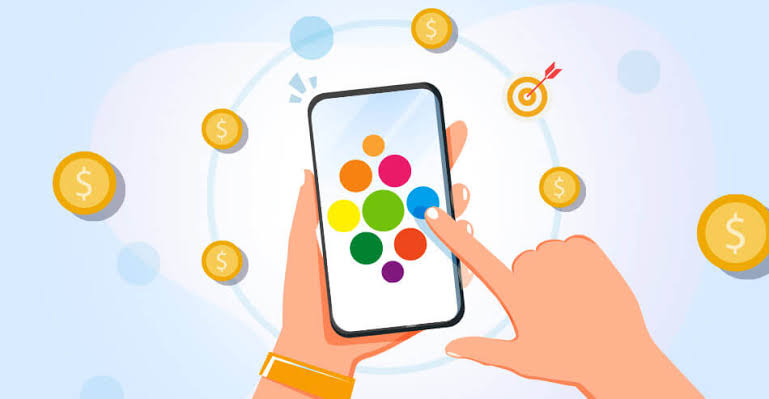Monetize smart, Monetize right: A comprehensive guide to mobile app monetization techniques and trends

In today’s digital landscape, mobile applications are no longer optional. They have become necessary, driving engagement, enhancing user experiences, and opening a lucrative revenue stream for businesses of all sizes. However, monetizing an app is not about randomly choosing a method and hoping it works. It requires an informed strategy, an understanding of your target audience, and an awareness of current trends in the industry. This article will explore critical techniques and trends in mobile app monetization, guiding you toward an innovative and effective revenue model.
Techniques in mobile app monetization
Here are four proven techniques to monetize your mobile app effectively:
In-app advertising
In-app advertising is one of the most prevalent methods for mobile app monetization. This technique involves displaying ads within the app, either as banners, pop-ups, or videos. Advertisers pay to display their ads to your app users, and you earn a portion of that revenue.
With a user-friendly interface and clear instructions, this strategy is a breeze, even for beginners. You don’t need to be a tech expert to get started. The potential for revenue generation is immense, especially if you have a substantial user base. As more users engage with your platform, the revenue potential increases exponentially.
You can choose from various advertising formats, including display ads, native ads, video ads, and more. This variety allows you to customize your ad strategy based on your target market and goals. The more frequently your users engage with your platform, the greater the revenue potential. By encouraging active participation and providing valuable content, you can maximize user engagement and, in turn, boost revenue.
While this method is popular, it also has its drawbacks. Users may find ads intrusive and disruptive to their experience, leading to potential user churn. Additionally, the revenue generated from ads may only be significant if you have a large and engaged user base.
Freemium model
The freemium model offers users a basic version of your app for free, with an option to upgrade to a better version for a specific fee. This model allows users to try out your app before committing to the paid version, making it an attractive option for risk-averse users.
The key to success with this model is striking the right balance between the free and paid features. The free version should offer enough value to entice users but leave them wanting more. The paid version should provide additional features and enhancements that justify the cost.
This model works best for apps with a loyal user base willing to pay for added value. It also requires continuous updating and improvement of both versions to retain users and attract new ones.
In-app purchases
In-app purchases (IAPs) allow online users to buy digital content or services within the app. This model is popular in gaming apps, where users can purchase to unlock new levels, buy power-ups, or remove ads.
To be successful with IAPs, you must offer appealing and relevant content that adds value to your app’s purpose. Additionally, you must ensure a smooth and seamless purchasing process for users to encourage them to make repeat purchases.
However, note that this model may only work for some apps. Users may be hesitant to make purchases within an app they have already paid for, and the revenue generated from IAPs may only be significant if you have a large user base willing to spend on premium content.
Subscription model
The subscription model offers users access to your app’s premium features or content for a recurring fee. This model is famous for apps that provide ongoing services, such as news, music, or fitness apps.
The key to success with this model is providing valuable and exclusive content that users are willing to pay for regularly. You must continuously update and improve your app’s offerings to retain subscribers and attract new ones.
Note that this model may only work for some apps. Users may hesitate to commit to recurring fees, and the content must be consistently high-quality to justify the cost.
Current trends in mobile app monetization
As technology evolves and consumer behavior changes, so do app monetization trends. Here are some current trends worth considering:
In-app purchases for physical goods
In addition to digital content or services, users can now make in-app purchases for physical goods. This trend has become increasingly popular, particularly in retail and e-commerce apps, as it provides a convenient and seamless shopping experience for users.
In-app subscriptions
While the subscription model is not new, there is a growing trend towards offering different tiers of subscription plans to cater to varying user needs and budgets. It allows app owners to target a broader audience and potentially increase revenue.
In-app currency
Some apps now use in-app currency, where users can buy virtual coins or points to operate within the app. This trend has seen success in gaming and social media apps, providing a sense of exclusivity and personalization for users.
With that said
Monetizing your mobile app requires careful planning, understanding your target market, and staying up-to-date with industry trends. By utilizing one or more of the techniques mentioned above and keeping an eye on current trends, you can develop a successful monetization strategy for your app. Remember to engage with your users continuously, provide valuable content, and adapt to changing consumer behavior to maximize revenue generation. With the right approach, you can monetize smart and monetize right, ensuring sustainable and long-term success for your mobile app.
